Current Students
Research topics of current CoMPLEX students
2016
- Marco Colnaghi
Quantitative modelling of major evolutionary transitions: the role of information and inheritance
Develop analytical and computational tools to study the role that information and inheritance played in major evolutionary transitions. During the first stage of my PhD, I will develop a new model for the transmission of mitochondrial haplotypes through maternal lineages, with a particular focus on purifying selection during germline development and its evolutionary purpose. In addition to this, I will tackle the question of the origin of sexual reproduction during the early stages of eukaryotic development, aiming to understand the evolutionary processes that drove the transition from Lateral Gene Transfer to Meiotic Recombination.
- Thomas Peacock
Rational Design of T Cell Receptors
T cell receptors (TCRs) sit on the surface of T lymphocytes, and are employed by the vertebrate adaptive immune system to specifically respond to an enormous variety of antigens. The TCR repertoire in an individual is incredibly diverse and largely specific to the individual. This diversity arises from an imperfect gene rearrangement process in the lymphocyte germline, and estimates suggest there may be as many as 1015 possible unique TCR configurations. It is this diversity that underlies the terrific power of the adaptive immune system, as it provides it with the ability to launch a very specific attack on practically any invading pathogen, even those that have never been seen before in the course of evolution.
The specificity of the adaptive immune system has seen adoptive cell transfer of T cells become an emergent strategy for personalised therapy, particularly in the realm of treating patients with cancer. The aim of this project is to to construct computational tools to build physical models that simulate the binding interactions and conformational changes of antigenic peptides and TCRs. Through the implementation of evolutionary algorithms, this project will aim to predict amino acid substitutions that could optimise the binding affinity between TCR and antigen, while preserving specificity and potency. These predictions would have the potential to guide the synthesis of engineered T cells that are more effective at targeting known antigens and could be used to more effectively treat disease through adoptive cell transfer therapy.
2015
- Nathan Blake
Statistical Analysis of Raman Spectral Data in Biomedical Research
The possibility of using micro-Raman spectroscopy to aid histopathologists in the detection and grading of solid tumours has long been considered. Despite early, and continuing, promise the technology has yet to become routine in clinical practice. One barrier to this realisation is that hyper-spectral data sets are large and rich sources of information which would benefit from nuanced statistical modelling. However, such modelling is conspicuously absent in the medical literature, with most analyses proceeding from Principle Component Analysis to binary classification. The science of remote sensing has also explored this problem and has proposed many solutions. One such solution is hyperspectral unmixing, a technique for 'unmixing' the materials present in the pixel of an image based on the composite Raman spectra of that pixel, and the raw Raman spectra of materials anticipated to be present in the sample.
The PhD. will seek to proceed from a firm theoretical foundation of the physical process of Raman scattering, the statistical and computational techniques of hyperspectral unmixing and the biochemistry of, initially, colon cancer.
- William De Cothi
Spatial Navigation in Rats, Humans and Artificial agents
The ability to navigate to food and safety is necessary for the survival of most living organisms. The last four decades have seen major advances in our understanding of navigationally-tuned cells in the brain for negotiating spatial and non-spatial domains. They have also seen the rapid development of computational theory and resources. During the course of my PhD I will use a novel experimental framework that allows direct comparison of rats, humans and artificial learning agents whilst they perform the same spatial navigation task in a stochastic environment. I hope that such a framework can help unite computational theories of spatial navigation with experimental observations by comparing the neural and behavioural correlates.
- Jorge Menendez Canelas
Dynamics of spiking networks that compute
Understanding the neural basis of intelligent behavior is one of the central goals of neuroscience. It is also highly relevant to artificial intelligence research, where state-of-the-art algorithms are yet to achieve the level of flexibility and adaptability observed in mammalian behavior. Recent research has shown that the mammalian neocortex plays a fundamental role in supporting adaptive behavior, so it is of special interest to understand how the highly structured nature of neocortical circuitry might implement useful computations, and how such computations can be learned. Furthermore, recent advances in reinforcement learning provide a rich computational theory of learning that can guide mechanistic models of learning at the synaptic level.
Achieving this goal requires a thorough understanding of neural circuitry, in particular an understanding of how the dynamics of networks of spiking neurons can support computation. The specific aim of this project is to develop biologically plausible models of cortical activity that can make quantitative predictions of motor cortical dynamics underlying goal-directed behavior and learning. We plan to test these predictions in rat models by using recently developed electrophysiological techniques via collaboration with the Kampff Lab at the Sainsbury Wellcome Center, affiliated with the NeuroSeeker consortium (http://www.neuroseeker.eu). These techniques will allow us to record from thousands of neurons across all layers of motor cortex in an awake freely behaving animal. By combining these with rich behavioral assays, we will be able to develop and test theoretical models of neural computation underlying adaptive motor behavior in a wide range of behavioral settings.
- Joshua Russell-Buckland
In-silico investigation of the neonatal (term and preterm) brain physiology using a systems biology approach: modelling birth asphyxia and neuroprotec
Interpreting the complex, multimodal signals from advanced medical instruments is important for clinical decision making, diagnosis and therapy. The process can be significantly aided by the application of computational models that integrate the data with a priori knowledge of both the physiology and the instrumentation. We have previously developed a number of such models, with particular focus on signals recorded using non-invasive near-infrared spectroscopy, and are currently working on a new generation that are more useable and applicable to a wider range of pathophysiological states.
These have been initially developed in the context of adult human physiology, but we also have a significant research interest in neonatal intensive care, especially for infants with hypoxic-ischaemic brain injury. Neonatal physiology is markedly different from that of adults, and neonates present a number of distinct clinical challenges. These need to be taken into account in models tailored for such subjects.
2014
- Tess Attenborough
Exploring diversity in the human gut microbiome and T cell receptor repertoire
The world is full of diverse biological systems on many different scales. Human beings have studied this diversity in numerous ways for over 2000 years, and especially in the last few hundred years there has been a rapid expansion in the interest and methodologies of this study.
One such system is the human gut microbiome. This community is made up of a vast number of microorganisms, primarily bacteria, but also including viruses and fungi. It is an area of increasing scientific interest and has been implicated in many aspects of human health and disease. Another diverse biological system is the T cell receptor (TCR) repertoire. This dynamic system comprises the immense diversity of all the rearrangements of TCR gene region and reflects different aspects of an individuals' immune system and health such as their response to infection. These two systems show symmetry and many common traits, and both need to coexist in the human body, which can drive changes in both systems.
A study undertaken in this PhD has compared two different methods of sampling the human gut microbiome and characterised their differences. One of these methods is a novel technique, and provides a new tool for clinicians and researchers to examine the human gut microbiome. In healthy adults it was found that while the alpha diversity was similar between the methods, there were very marked differences in bacterial community composition between the two sampling types. This was in accordance with studies suggesting there are distinct bacterial communities in the human gut, and these two methods may be collecting samples from these different communities. A different study in this PhD tracked the TCR repertoire diversity in paediatric patients following umbilical cord blood (UCB) transplants. This allowed further understanding of the process of recovering TCR repertoire diversity in immune reconstitution after these haematopoietic stem cell transplants (HSCT). The recovery trajectory from this less common form of HSCT has not yet been well characterised and this study contributes towards this body of knowledge and supports UCB as a viable source for HSCT.
Future work undertaken in this PhD will include a more comprehensive analysis of the TCR repertoire diversity and attributes, analysis of the differential effects of a variety for treatments for IBD in paediatric patients, and the analysis of diversity and the microbial communities in an interventional murine model of rheumatoid arthritis. In addition, work will be undertaken during the rest of the PhD course on the study of diversity in itself in order to better understand and apply the techniques, to improve understanding of the overlap in diversity analysis tools in these various fields, and with the hope of developing specialised tools for diversity analysis which incorporate all the desired components.
One study in this PhD tested the OriCol device in collaboration with Origin Sciences.
- Ricardo Barrientos
How the biomechanical properties of tissues contribute to tissue growth and 3D morphogenesis
How tissues and organs achieve their final size and complex three-dimensional (3D) architecture is a fundamental problem that remains remarkably ill understood. Although extensive research has focused on the genetic and biochemical control of tissue growth and morphogenesis, significantly less attention has been paid to their mechanical regulation, especially in a 3D context.
Tissue folding is a highly conserved morphogenetic process enabling systems to obtain their 3D structure from a planar 2D tissue. Tissue folding is involved in all stages of development, such as gastrulation and neural tube formation. At the end stages of development, tissue folding is also essential for the formation of vital organs such as the brain and gut. Defects in tissue folding can manifest in severe pathologies such as spina bifita. Therefore, a better understanding of the mechanisms of tissue folding is critical for understanding development and disease.
We have chosen to study tissue folding in the Drosophila imaginal wing disc, the precursor to the adult wing, due to its genetic tractability and complex yet reproducible multi-folded morphology. The wing disc is a sac-like structure built of polarized epithelial cells. It consists of a layer of squamous cells, the peripodial membrane, which covers and links to a layer of columnar cells, the disc proper. The whole structure is encapsulated by an extracellular matrix. During development, the disc proper layer becomes increasingly folded at stereotypical positions. In this study, we aim to determine how the precise positions of tissue folds within the imaginal disc are formed. In particular, we would like to understand how the mechanical properties of the different layers of tissues impact on tissue folding and morphology. As this requires an interdisciplinary approach, novel integrations of state-of-the-art genetic, imaging, biophysical and computation techniques will be used to address the problem.
We will use a new micro-pipetting technique recently implemented in the Mao and Paluch labs (LMCB) to quantify the differences in the mechanical properties of the wing disc as it growths and folds. A special focus will be placed on understanding how the extracellular matrix affects the elasticity of the tissue. These measurements will be used to parameterise and simulate a finite element computational model of the wing disc developed in the Mao lab.
- Rachel Coy
Modelling the coordinated patterning of nerves and blood vessels during development and repair
The growth of nerves and blood vessels is intimately linked during development and repair. The growth, patterning and branching of each is influenced by a common range of chemical and physical environmental cues. Vascular and neural cells respond to similar signals and also communicate directly in a range of ways. Understanding and controlling the growth of both blood vessels and nerves is essential in many tissue repair scenarios, such as wound healing, grafting and the implantation of tissue engineered constructs. Current research in this area tends to consider either nerves or vessels individually rather than seeking to understand and exploit their common responses and interdependencies. Sufficient knowledge has been gained from experimental studies to enable theoretical models to be created that could simulate the complex interdependent growth of vessels and nerves through an implanted tissue. This approach will direct and refine future experimentation, whilst simultaneously increasing fundamental understanding of the biological and physical mechanisms underlying vascularisation and innervation (and ultimately informing clinical decision making).
The project will significantly extend existing mathematical models of angiogenesis (developed predominantly for tumour-based scenarios, e.g. [1]), and couple them to new theoretical frameworks that describe innervation in response to both chemical and mechanical cues [2]. These models will take the form of hybrid discrete-continuum frameworks: coupled systems of partial differential equations will describe transport of key solutes and growth factors, while the sprouting and elongation of vessels and nerves are described using random walk fields, biased by the underlying spatial solute/ factor fields. The project will involve both the development of new models, and also their solution using a range of analytical and numerical methods.
Whilst the focus of the work will be on development and solution of the mathematical framework, the student will have the opportunity to design and conduct some lab-based experiments and analyses to quantify the important chemical and mechanical effects, and also parameterise and test the mathematical models. This phase of research will also exploit data being produced by experimental researchers in the Phillips lab and other collaborating groups as part of ongoing projects. The resulting parameterised models will provide significant understanding of the interplay between innervation and vascularisation in repair scenarios, and can be used to direct the design of implanted tissue engineered repair devices.
The project is a close collaboration between two UCL groups focussed on mathematical modelling (Shipley) and regenerative medicine (Phillips) and the student will benefit from working within a highly supportive and dynamic multidisciplinary environment.
- Robert Gray
Analysis of the Poxvirus entry fusion complex by super-resolution microscopy and mathematical modelling
The research program is focused around the elucidation of poxvirus fusion machinery architecture using Super-Resolution microscopy. The project looks to marry computational methods such as - Particle-Averaging analysis and Mathematical Modelling - with classical Virology and Cell Biology approaches to elucidate new mechanistic understanding of the poxvirus fusion machinery.
- David Hodgson
Modelling the impact and cost effectiveness of vaccination for Respiratory Syncytial Virus in England
Respiratory Syncytial virus (RSV) is a very common infection to which most children having been exposed by their second birthday. RSV infection causes bronchiolitis, with most cases manifesting in mild cold-like symptoms, difficulty breathing and cough lasting for up to two weeks. However, bronchiolitis in very young infants and those with particular underlying health problems such as congenital heart disease can be much more severe, resulting in hospitalisation. Currently there is no vaccine available against RSV, but there are a handful of possible candidates with licensure on the horizon. Potential vaccine target groups include infants, pregnant women and the elderly. Before a national RSV vaccine programme can commence, it will be necessary to determine whether any of the candidate vaccines can effectively reduce overall morbidity and mortality whilst remaining a cost-effective solution. Furthermore, a programme will need to ascertain which members of the population should receive any such new vaccine to ensure efficiency and reach sufficient uptake. Strategies might include targeting groups most at risk of developing complications or targeting groups involved in the transmission of the pathogens to those most at risk
- Ben Margetts
Modelling next generation sequence data for predictive algorithm-guided clinical decision making in patients with viral infections
Children are immunocompromised following stem cell and solid organ transplantation and infections caused by viral pathogens can be life-threatening. Antiviral drug treatment options are limited, and resistance develops in some cases. We have a growing database of viral loads measured in children following transplantation at Great Ormond Street Hospital. In addition we have information on antiretroviral drug therapy, a range of covariates (e.g. demographics, biomarkers of immune function). Crucially a novel pull-down method that allows deep sequencing of whole pathogen genomes directly from clinical material without the need for prior virus culture or PCR has been developed, so we have serial whole genome viral sequences. Thus we can look at the evolution of both viral load and the genetic make-up of the virus with time and investigate how this is associated with drug therapy and immune function amongst other covariates. The aim ultimately is that the models derived will be used in real time to guide treatment choice ion patients. Mathematical models of viral dynamics require simplification, statistical models of multi-level longitudinal data are required, and further work on sequence data is needed.
Biological opportunities lie in virology and genetics. Mathematical opportunities lie in statistical genetics and dynamical systems modeling of viral loads - ultimately combining the two to make predictive algorithms of antiviral drug efficacy and resistance.
- Jamie Rickman
Microtubule Dynamics and Self-Organisation
Microtubules are highly versatile polymers, capable of self-organising into a variety of structures that are crucial for the functioning of cells. I am trying to understand the mechanisms and design principles governing microtubule self-organisation by studying microtubule behaviour on two scales. At the level of the filament, I have developed a mathematical model of microtubule dynamics, focusing on the stochastic fluctuations of the EB cap, a structure that is thought to be critical for microtubule stability. On a larger scale, I have developed a computational self-organisation model alongside an in vitro experimental system of dynamic microtubules and a molecular motor. Simulations reveal a state space of microtubule patterns that recapitulate what is seen experimentally and have interesting implications for the self-assembly of the mitotic spindle in vivo.
- Dimitrios Voulgarelis
Mathematical models for proliferation and differentiation of stem cells
Regenerative medicine is a rapidly evolving field, and involves the replacement or introduction of cells or organs in humans. Cell therapy is a sub-field of regenerative medicine in which cells are used to replace or repair damaged cells. This important area is still driven by experiment, and urgently requires the development of appropriate mathematical models, which are experimentally informed and robust against the high variability inevitable in cellular systems.
This PhD project is based on the development of such robust and experimentally relevant mathematical models for the proliferation and differentiation of stem cells, whose ability to differentiate into various specialised cell types holds great promise as therapeutics.
Many events in the proliferation and differentiation of stem cells appear to be both local and stochastic. Such systems are readily modelled by discrete stochastic models, such as agent based models (ABMs) and finite automata (which subsumes cellular automata). ABMs will be used as a starting point to characterise cell-cell and cell-environment interactions. Such systems are highly nonlinear, coupled, and depend on a variety of signals. For instance, proliferative cells gradually lose their tendency to divide, each step being defined by a probability that depends on number of cells in various states, and the particular properties of the individual cell (such as its current position within the cell-division cycle). Prototype ABMs will be created quickly and easily in the open-source modelling package Repast Simphony. The results will be used to refine the models, as well as to test experimentally relevant conditions. This may involve detailed mathematical analysis or the use of more sophisticated computational tools, such as C++.
While it is easy to generate an ABM, it is quite difficult to achieve common modelling tasks, such as evaluating steady-state conditions, devising an optimal control strategy (e.g., to reach a desired cell distribution), and parameter estimation. In most cases, it may be most effective to devise an equivalent system of ordinary or partial differential equations (ODEs or PDEs), for which questions of control, parameter estimation, etc. are well understood. However, the question of which such equivalent model is best for a particular purpose is an open research question. We will investigate this question for specific models, working closely with experimental groups to ensure that the models generated are relevant to current medical questions.
The more detailed plan is based on exploring particular features within the above setting and then on balancing the modelling through ABM and associated continuum-like approaches with connections to experiments and control and parameter effects.
- Tim West
Investigating phase dynamics and pathological synchrony in the Parkinsonian brain
Parkinson's disease can be understood as a pathology of synchrony in the brain whereby abnormal temporal dynamics of oscillatory activity are thought to play an important role in the debilitating effects of the disease. Research up to this point has mainly utilised linear measures of coherence between different brain regions. In this project we will apply non-linear time series analysis to determine the temporal dynamics of both amplitude and phase fluctuations in the signals recorded from both the subthalamic nucleus (STN) and the cortex. Theoretical work in the domain of coupled oscillators has demonstrated a quantifiable change in the phase dynamics between oscillators as their coupling strength reaches a critical point.
We hypothesise that the abnormal exaggerated oscillatory power in the beta range (amongst others) that occur in the STN local field potentials of Parkinson's patients - and which are suppressed by pharmacological intervention, result from a shift from healthy network dynamics towards a pathological coupling by which neurons show an exaggerated propensity towards synchronisation. This excessive synchronisation is thought to 'jam' the local network resulting in impaired cortical communication and the resultant akinetic symptoms associated with the disease.
Our dataset is taken from Parkinson's patients treated at several different hospitals in London, Berlin and Oxford. Patients undergoing treatment with deep brain stimulation (DBS) provide an opportunity to record from deep structures in the brain such as the STN whilst also simultaneously making recordings with magnetoencephalography (MEG) allowing for a wider understanding of the interactions between the cortex and the basal ganglia. We hope that our findings will help to drive the development of novel interventions that may disrupt pathological network synchrony and improve patient outcomes.
- Peter Zatka-Haas
Relating neural activity to perception and action through statistical and mechanistic modelling
Recent advances in neural recording and manipulation have brought us closer to being able to answer the questions: How do perception and action relate to the activity of single neurons? In what ways do groups of neurons, interacting through complex circuitry, contribute to these processes?
This PhD will explore the representation of perception and decision in biological neural networks. It will examine how such representations may vary across different cortical regions, layers and cell types. The project will apply statistical modeling to quantify behaviour in terms of unobservable latent features of perception. These features include things like sensory salience, bias, motivation - all of which come together to determine behaviour but which are not individually observed. By simultaneously monitoring the activity of neurons, one can relate these latent perceptual features to the activity of neurons directly. Furthermore, by integrating information from many neurons one can explore how populations of neurons underlie the process. This will begin to answer the question: what aspects of perception do neurons represent when they mediate decision making?
The project will have a major focus on developing statistical and mechanistic encoding models of neurons and neural populations. This will involve both inductive data-exploration and deductive hypothesis-testing approaches. The remaining time will be dedicated to experimental work to record sensory cortical and striatal regions simultaneously during behaviour. This is based on previous work implicating the striatum in sensory-driven decisions.
Specifically, the project will expand a Generalised Linear Model of decision making to include features of single neuron activity, such as firing rate, as regressors. This will utilise neural firing data previously acquired from V1 and Cingulate cortex during a complex mouse task involving decisions made under different visual stimuli. Electrodes record neural activity extra-cellularly and the activity of individual neurons can be isolated by spike-sorting. These efforts will give an initial impression of what latent perceptual features different neurons represent in a complex behavioural task. Another perspective, which will be applied, is to flip models of behaviour to predict neural activity from the behaviour, rather than behaviour from the neural activity. This 'decoding' approach incorporates the activity of member neurons involved in a putative circuit as regressors in order to quantify how members of the circuit might influence one another individually. Further work will look at how circuits may represent features through properties such as phase relationships in spiking of several neurons together - properties that do not exist on the level of single neurons. Future analyses will pay particular attention to neurons along the dorsal visual stream from occipital to parietal cortex - regions known to have a role in decision making from visual stimuli.
To support the analytical work, classes will be taken in statistical modeling and probabilistic and unsupervised learning. Two supervisors, Prof Matteo Carandini and Prof Kenneth Harris, lead the group. Each has considerable expertise in neuroscience and statistical analysis. In addition a postdoc, Dr Nick Steinmetz, will provide direction to the project, as it will utilise his data.
2013
- Efthymia Diamanti
Visual signals for navigation in the cerebral cortex
A fundamental question in computational, systems, and cognitive neuroscience concerns the way the brain is able to perform coordinate transformations. A striking example of such transformations is the one that goes from the representation of the visual field present in primary visual cortex (V1) to the map of the local environment that is provided by the place fields in the CA1 region of the hippocampus. For the purposes of navigation, the information provided by V1 in retinal coordinates needs to be transformed by CA1 to a system of geographic coordinates. We know that this transformation occurs, but we don't know how or where. The first place to look for it is in the system of 9 higher visual areas that process information present in V1. Do they perform at least part of the coordinate transformations, and if so, how do they do so?
This project will attack this problem through a combination of advanced experimental approaches (supervised by Carandini) and computational approaches (supervised by Harris). The experimental techniques include: (1) widefield imaging of cortical activity at the mesoscopic scale, using Calcium sensitive or Voltage-sensitive fluorescent proteins; (2) two-photon microscopy of cortical activity at the cellular scale, using Calcium sensitive fluorescent proteins; (3) if necessary to reach areas below the surface of the brain, multi-electrode recordings of population activity. These experiments will be carried out in head-fixed mice that are trained to perform a simple navigation task in virtual reality. These experiments will provide a large amount of neurophysiological data, which will be analysed using advanced methods of data analysis tailored to decoding the activity of neuronal populations.
- Talfan Evans
Interactions between environmental inputs and grid cell firings
Grid cells are found in the medial entorhinal cortex (mEC) [Hafting et al., 2005]. These cells fire at constant spatial intervals within the rodent's environment, mapping out a regular hexagonal pattern. Grid cells appear to be arranged in functional modules - cells that are proximate in the brain share a common scale and orientation, but differ in their relative spatial offset [Barry et al., 2007; Stensola et al., 2012]. The location of grid firing fields are constant between visits to an environment and, interestingly, the orientation of grid firing fields also appear to maintain a constant orientation relative to the boundaries of different square environments [Stensola et al., 2013].
It has been suggested that grid cells form part of a broader neural circuit that supports path integration - updating an internal estimate of position on the basis of self-motion information [McNaughton et al., 2006]. Importantly, path integration systems accrue error over time, and this is reflected in the drift or complete degeneration of grid firing field patterns in the absence of sensory inputs [Hafting et al., 2005, Bonnevie et al., 2013]. It has also been observed that grid cells emerge later in developmental timelines than either place, boundary or head direction cells, suggesting that input from one or more of these cell types contributes to the observed stability of grid firing fields in familiar environments [Wills et al., 2010; Langston et al., 2010; Bjerknes et al., 2014].
Taken together, these experimental results suggest that grid cells receive sensory inputs that stabilize their firing patterns in familiar environments, produce a specific grid field orientation relative to the boundaries of square environments and reduce accumulating path integration error in the grid cell network [Bush and Burgess 2014]. A likely candidate to provide this input are boundary cells [Barry et al., 2006; Solstad et al., 2008; Savelli et al., 2008], which fire at a specific distance and direction from environmental boundaries, independent of orientation.
The aim of this project is to examine the interaction of border and grid cells in the mEC through a combination of computational modeling and rodent in vivo electrophysiology. This includes the development of neurobiologically plausible models of the integrated grid cell circuit that can account for the experimental observations described above, and make further predictions that can be validated through the analysis of electrophysiological studies in rodents.
Computational techniques will include: simulations of neural firing rates contingent on the animal's location using ODEs and real behavioural data (e.g. Bush & Burgess, 2014); simulation of modification of synaptic strengths between neuronal populations using unsupervised learning rules; maximum likelihood modelling of neuronal firing assuming spatial models for the mean rate of each spatial cell type (boundary cells, grid cells etc), behavioural occupancy data and Poisson firing statistics (e.g. Burgess et al., 2005). Experimental techniques will include participation in in-vivo electrophysiological recording of spatial cells in the hippocampal formation of foraging rodents during manipulations of environmental and proprioceptive input, including the use of virtual reality (e.g. Chen et al., 2013), and investigation of neuronal recordings in developing rat pups (e.g. Wills et al., 2010).
- Alex Fedorec
Synthetic biological engineering of commensal E Coli for intestinal microbiome therapeutics
The human gastrointestinal (GI) tract and the wide range of prokaryotic and organisms it supports - here referred to as the intestinal microbiome - form a mutualistic host-microbe symbiotic system crucial for many processes including the breakdown of plant polysaccharides, microbial fermentation and metabolite production. Variation and disruption of this natural ecosystem is linked to a diverse array of disorders including infectious disease, autoimmunity, obesity and cancer. Probiotic treatments aim to alleviate some of these disorders by recolonising and restoring the normal intestinal microbiome.
The engineering of commensal microbiota through synthetic biology approaches has the potential to create novel therapeutics and diagnostic tools, that can be triggered by external and environmental signals, and delivered to localised regions of the GI tract in a context dependent manner. Of paramount importance is that the disruption to the natural inhabitants of the niche is minimal, which can be achieved through engineered intelligent gene systems.
One aim of our group is to engineer the probiotic strain E coli NISSLE 1917 into a versatile therapeutic device that can deliver molecules directly into the GI tract. We will develop, characterise and mathematically model, a suite of inducible, remote control gene expression devices using plasmids implementing robustly designed gene networks. For application in both animals and humans, release of antibiotic resistance genes into the environment must be minimised. Our system will be retained in the host chassis without the need for antibiotic resistance using toxin-antitoxin (TA) systems. This enabling technology will provide a foundational platform for more advanced cellular nanomachines. Future targets could include alternatives to antimicrobials in animals and humans, prophylactics for infectious disease, and novel ways to tackle chronic diseases such as diabetes and obesity.
- Nils Gustafsson
Super-Beacons and Beacon-STORM: a new generation of small tuneable photoswitching probes and super-resolution approaches
We aim to improve super-resolution localization microscopy, allowing access to a dynamically tuneable imaging framework for live- and fixed-cell high-speed multi-colour super-resolution. At its core, the project entails the development and validation of a novel type of modular super-resolution probe of simple synthesis - Super-Beacons, permitting to easily plugin most available synthetic fluorescent dyes into a linker scaffold that induces photoswitching by transient high-efficiency quenching. This feature avoids the need of non-physiologic (generally toxic) photoswitching inducing buffers, thus allowing live-cell super-resolution. The probe scaffold can be easily modified to generate light, chemical or thermal sensitive triggers that modulate the fluorescence pulsing rate or arrest the probe in either an ON-or-OFF state. A hardware-software imaging framework will be developed to optimize the probes switching kinetics while super-resolving biological structures. We aim to fix a major unbalance between the current properties of probes for super-resolution localization microscopy (bulky and nearly uncontrollable switching dynamics) and imaging apparatus whose performance depends on specific probe kinetics and size. These developments will be critical to address fundamental problems in cell biology and of interest to the life-sciences research community.
- Ross Harper
The Drosophila circadian clock: Experimental and computational analysis of (i) different sensory entrainment pathways and (ii) integration of sensory information from different modalities
All forms of life adjust themselves to the daily rhythms of their environments using endogenous oscillators commonly called circadian clocks. Peripheral and central body clocks exist, and both require extrinsic information (e.g. light or temperature changes) to keep in sync with the geophysical cycle (entrainment). In addition, intrinsic cues that can be externally measured (e.g. activity levels) have been linked to clock entrainment. Recently, we showed in the fruit fly Drosophila melanogaster, that activation of one class of proprioceptors (chordotonal organs or ChOs) is sufficient to entrain central brain clock neurons. Proprioceptors are mechanosensors that monitor the positions, and relative movements, of an animal's own body parts. Since activity is itself partly regulated by circadian clocks, the existence of proprioceptive entrainment pathways that must be integrated with other entraining Zeitgebers implies substantial richness in the animal's conceptions of time.
Using Drosophila, this project will investigate the relationship between sensory and circadian systems. The project's first arm is dedicated to the dissection of the neurobiological bases of sensory, and particularly mechanosensory, clock entrainment. It will e.g. aim to (i) identify the specific stimulus requirements for effective entrainment, (ii) determine the underlying mechanosensory pathways and, in a combined computational and experimental strategy, (iii) quantify the precise contributions of an animal's activity to its sense of time. Computational and experimental strategies will be used to analyse the nature and impact of activity feedback. A specific aim will be to disentangle the influences of extrinsic and intrinsic pathways. The combined experimental/computational part of the project will specifically focus on the question of neuronal integration, weighting and reliability of multi-sensory cues.
The project's second aim is to build computational accounts of these experimental results, based on an evolving understanding of the intra- and inter-cellular mechanisms involved in clocks. We will initially consider Weakly Coupled Oscillator models, which assume that interactions among the oscillatory variables are sufficiently puny that only the phases of the underlying oscillators need be represented. The structure of the underlying interactions (mutual entrainment, master-slave etc.) will then be inferred using Bayesian inference in tailored models. An alternative approach relaxes the assumption of weak interactions, allowing dependencies among both amplitudes and phases of the experimental variables. Here the project will apply a generic approach from machine learning based on Nonlinear Systems Identification. This will allow a more sophisticated treatment of the relative strengths of extrinsic inputs (light, temperature) versus intrinsic variables (e.g. locomotor, of ChO, activity) on the fruit fly's circadian rhythms.
We will apply various techniques from the modern Drosophila experimental toolbox, e.g. genetically encoded neuro-manipulation (e.g. silencing or hyperactivation of ChOs by means of thermo- and optogenetics) or neuropharmacological approaches (e.g. ChO-specific inhibitors) to tease apart and test the resulting models.
- Hollie-Ann Hatherell
Whole-genome sequencing and mathematical modelling of isoniazid resistant tuberculosis in hard-to-reach populations
The UK sees around 8,500 cases of tuberculosis in a year, around which ~6.5% are resistant to the cheap, effective, first-line drug isoniazid. An outbreak of isoniazid resistant tuberculosis has been occurring in hard-to-reach populations in London since 1995 (Maguire Eurosurveillance 2011). Hard-to-reach groups have trouble engaging with traditional models of clinical practice and this outbreak has been difficult to contain.
Whole genome sequencing, coupled with mathematical modelling and social-network analysis is known to be a powerful tool to capture the dynamics of tuberculosis outbreaks and therefore to identify routes of control (Gardy NEJM 2011). For the first time in the UK systematic whole genome sequencing of isoniazid resistant tuberculosis cases is being planned and funded through a UCL-Public Health England collaboration. Building on the demographic, clinical and contact tracing data available from Public Health England's Enhanced Tuberculosis System this project will therefore seek to model the dynamics of the London outbreak and investigate effective mechanisms for control using an individual based model.
By sequencing strains of TB that are isoniazid resistant, we would generate a unique dataset of WGS, contact tracing and epidemiological data. This will allow us to advance methods (based on Didelot et al MBE 2014 as a starting point) to infer transmission dynamics, for example comparing transmission in household versus transmission at the community level, and taking into account age mixing patterns and place of origin. This calls for novel statistical and modelling approaches. Specific biological questions to be addressed by the novel modelling approach will include the extent to which INH resistance is being acquired vs transmitted in London. Finally, we will model approaches to determine whether there likely points where we might have missed individuals. This will allow us to ask whether particular approaches would be better at containing the outbreak (e.g. respondent driven sampling), and ultimately if real time WGS and analysis might impact TB control. These findings will have application beyond the current outbreak and London and should advance both TB control and mathematical biology.
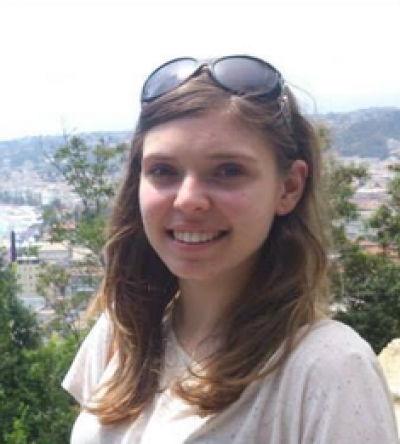
- János Hódsági
Advancing cochlear implants
Cochlear Implants (CIs) are the most successful sensory therapeutic technology, as judged by their ability to restore hearing function to the severe and profoundly deaf. CIs work by stimulating directly the auditory nerves, bypassing damaged or absent sensory hair cells in the inner ear. Today, nearly 400,000 people worldwide have a CI, and in UK children born deaf receive two implants, often in the first few months of life. Such is their success in restoring hearing function that individuals with some remaining (usually low-frequency) hearing are now candidates for implantation - implanting the many individuals with residual low-frequency hearing will combine the benefits of acoustic hearing at low frequencies (critical for distinguishing voices, sound localisation and 'cocktail party listening') with the benefits of electrical hearing for distinguishing speech sounds. The aim of this project is to develop combined Electrical and Acoustic Stimulation (EAS) stimulation strategies that optimise listening performance in deaf, implanted individuals with residual hearing function, and to test these strategies in implanted animal models of EAS. Understanding how the brain combines information about sound across very different forms of input (acoustical and electrical) will be a key outcome of this study.
- Rachel Lane
Acoustic tracking to understand behavioural environment of wild animals
Understanding the activity of wild animals in their natural environment is of critical importance for their conservation. Monitoring habitat-use, movement and behaviour can aid understanding of how species may interact with their surroundings and the ecosystems to which they belong. Recent developments in technology have allowed GPS tracking of a wide range of animals, via animal-borne tags, however whilst GPS tracking can provide detailed locational data over time and additional environmental variables can be identified via remote sensing, it cannot yet provide concurrent information on specific events occurring in the animal's surroundings. In this project, we hope to use newly developed miniature animal-borne audio-recorders in conjunction with GPS tags, to enable acoustic as well as spatial monitoring of animals in the wild. The extra dimension provided by acoustic data will be used to build upon existing methods of behavioural identification, as well as to identify particular events in the soundscape of an individual, allowing more accurate exposition of the relationship between behaviour and an animal's environment.
This project aims to bring together new developments in miniature tracking technology, novel statistical and mathematical analysis (to decompose and model spatiotemporal & acoustic behaviours) to determine the complex relationships between an individual, its local behavioural context, and the broader environment on which it relies.
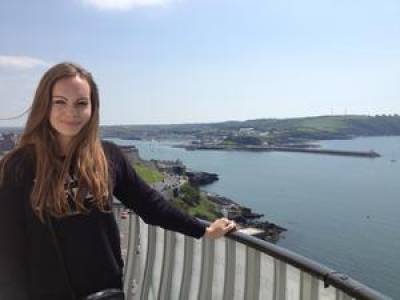
- Jeremy Levy
New phylogenetic methods to resolve deep animal phylogenies
Reconstructing accurate phylogenies is a major pursuit in biology, yet despite the progress made in our understanding of deep metazoan phylogeny, important questions remain. These typically involve interesting cases of rapid radiation or of rapid divergence-two drivers of biodiversity change and biological innovation.
State-of-the-art species trees are inferred from concatenated, "carefully" selected marker gene. This is wasteful at two levels. First, most genes are simply not considered. Second, even for those that are, by "averaging" their sequence through concatenation, we stand to overlook interesting instances of rapid evolution having occurred in individual genes and branches.
This interdisciplinary project involves both experimental and computational biology. In the experimental part of the project, we will collect fresh material from multiple members of key taxa, extract RNA and use NGS to produce largely complete transcriptomes. In the computational part, we will implement a novel and efficient maximum likelihood tree inference method that relaxes the assumption of identical branch length across all orthologous genes and instead only assumes a joint tree topology (i.e. speciation order).
The project will exploit the recent availability of efficient software libraries for tree likelihood computation. The new method will be validated using a broad variety of simulated sequence data.
Computational components of the project:
- Bioinformatics: transcriptome assembly and annotation, orthology inference.
- Computer science: software engineering, code profiling and optimisation, numerical analysis, high-performance computing
- Statistics and Modelling: Markovian models of sequence evolution, phylogenetics
Life Science components of the project:
- Experimental biology: Specimen collection of principally marine taxa from Kristineberg marine station, Sweden as well as via collaborators. Nucleic acids extraction, NGS short read transcriptome sequencing (funded by existing grants).
- Evolutionary Biology: interpretation of evolutionary trees
- Ben Oldham
Sensor networks and control system of WAM exoskeleton project
Orthotics and prosthetics are becoming increasingly advanced, however they still remain heavy and bulky with subjects at risk of developing pressure sores [1]. This project will aim to develop a flexible sensor skin system to be in contact with the user's body, which will have the ability to flex and articulate. The device must be able to provide information about forces applied related to articulating joints of the body or prosthetic, and also warning of possible damage to skin/bone of user, in affect joint proprioception and must be biocompatible.
BACKGROUND
The most common transduction techniques for wearable sensors are based on capacitive, piezoresistive, thermoresistive, inductive, piezoelectric, magnetic and optical methods [2]. The intrinsic principles associated with these techniques are well established but none have been used successfully as yet. The optical systems have the advantage of very low hysteresis, at a very high frequency response. Piezoelectric systems are easy to fabricate, and are generally stiff and unaccommodating, hysteresis is also a problem affecting frequency response. Developing a new sensor system for use in orthotics and prosthetics, modelling their ability to monitor the movement of the human body, and testing their performance is the aim of this PhD project.
- Chris Ruis
Investigating viral evolution using phylogenetic models
Viruses undergo host shift events upon transmission from one host species to another. These shift events are accompanied by a change in the host specific selective constraints active on the virus. In the case of influenza, the 2009 human H1N1 pandemic virus was the product of multiple host shift events, from waterfowl to pigs and subsequently pigs to humans. The 1918 'Spanish flu' pandemic was far more devastating than the 2009 pandemic, but the transmission route this virus underwent remains unclear. The Goldstein group has developed computational models to investigate the selective constraints active upon genes of interest, and characterising how these constraints change. By applying these models to investigate the changes in selective constraints acting on influenza, we aim to elucidate the host shift events that preceded the 1918 influenza pandemic. Understanding such past transmission histories is vital to understanding the process that leads to a pandemic outbreak and therefore to preventing future outbreaks.
It is unclear whether the virus which participates in the host shift has evolved traits that bias the virus for transmission or whether selection of the virus which will be transmitted is a purely opportunistic process. Substitutions have been identified which characterise the pig-human transmission of influenza. However, the avian-pig host shift is likely to present a greater challenge to the virus as it must move from an avian to a mammalian host. The changes a virus needs to undergo to permit this transmission are less well defined. At such transmissions, directional selection is predicted to act on viral proteins as the virus needs to adapt to a new situation. We aim to apply our evolutionary models to identify directional selection acting on influenza between avian and swine hosts, and using ancestral construction techniques, determine how 'typical' the host shift virus was. Identifying protein sites which are under such selection is vital in surveillance efforts to identify viruses with the ability to change host.
Current phylogenetic models are unable to deal with polymorphisms as they treat all changes as fixed changes. We aim to extend our current phylogenetic models to incorporate population genetics and therefore polymorphisms. We will then apply these population genetic models to situations in which multiple strains of a single virus exist within a human population, such as influenza and norovirus. These models will also be applicable to examine intrahost HIV evolution in deep sequencing datasets when such datasets become available.
- Liam Shaw
Understand the reciprocal interactions between the Gut Microbiomes and Paediatric Immune System
At Great Ormond Street Hospital for Children, we have many children who have an underlying congenital immune defect, such as missing T cells or B cells. These patients usually require a Bone Marrow Transplant or Gene Therapy to correct the defect and survive. It has become increasingly clear that during the recovery phase in patients who survive, the short-term and long-term outcomes, such as how well they grow and how many infections they get, are influenced by environmental factors. The gastrointestinal tract (GIT) (from the mouth to the anus) has co-evolved with microbial communities that are specific to a particular mucosal ecological site. These microbiomes, as they are called, contains more than 10 times the total number of cells in the human body and 100 times more genes. It is likely that changes in the GIT microbiome are important determinants of outcome. We are investigating the short and longterm impact of host immunity and antibiotics on the composition and complex structure of this GIT microbiome. We are then examining these data with indices of immune function to examine how the GIT microbiome may subsequently influence immune function. At present we are using a 16S rDNA gene-based approach, which allows us to sequence 16S rDNA that all bacteria possess to identify bacteria from the GIT sample. Sequences are clustered into operational taxonomic units against a reference database. This produces a list of species and their relative abundance for each sample, as well as species richness and phylogenetic diversity indicies, which can then be compared group to group. We are now also generating metagenomic data, which will enable us to define the microbiome at higher resolution and provide data on viral and fungal organisms. A combination of bioinformatic methodologies will allow us to delineate the composition of microbial communities and their relationship with the human immune system. This will provide us with the opportunity to derive predictive models for future disease outcomes and ultimately give insight into novel forms of therapy.
The PhD student will work on the bioinformatic components of this project. They will work within a team which includes scientists who are performing DNA sequencing, Cell Biologists, other Mathematicians, Statisticians and Clinicians. The team includes other PhD students and Post Doctoral Scientists. This multidisciplinary team is based at UCL. We have developed a highly successful model of supervision that includes experts pertinent to the project. In this case the PhD student will be supervised by experts in Statistics and Mathematics, Modelling, Microbial Genetics and Medicine.
Gene Sequence data will be analysed to obtain Taxonomic information. Alpha (Chao, Shannon index, coverage) and beta diversity (weighted and unweighted unifrac distances) for each sample will be calculated and used for analysis in R. Microbiome data from various patient groups will be integrated with data generated from immunological studies. A range of bioinformatics techniques will be used such as exploratory (hypothesis generating) data analysis to best describe each group and to ascertain differences between groups. We will employ supervised pattern recognition techniques including linear and nonlinear latent variable regression methods such as OPLS-DA (orthogonal partial least squares (PLS) discriminant analysis) and O2-PLS-DA to detect associations between the microbial ecology and immunological profiles.
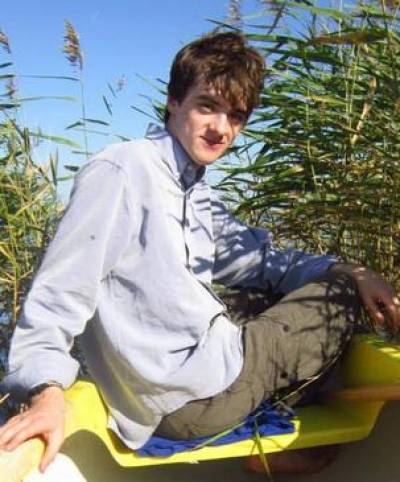
- Thomas Tanay
The limits of Deep Learning for Vision
This PhD project would be conducted within CS and be primarily computational in nature, though psychophysical experiments will be used as appropriate. Alan Johnston will provide input on human visual mechanisms, making the research outputs accessible to psychologists, and design of psychophysical experiments. A developing collaboration with Pieter Roelfsema (Amsterdam) will provide relevant neurophysiological input to the project, with the student making annual visits to his lab.
Bag-of-Visual-Words and (more advanced) Deep Learning approaches have made a huge impact in Computer Vision, delivering performance on many categorization tasks that appears to approach human levels. The approaches also have neural plausibility, so stand as candidate models of biological vision. This project is concerned with challenging these models by discovering gaps between machine and human capabilities when applied to non-natural images. The goal of the project is to advance understanding of human vision, a secondary goal is to develop improved computer vision methods that can be applied to the problem domains (Biomedical, Security, Forensic and Geo Sciences) studied in the Griffin Lab. Three work packages are planned.
1. Understanding adversaries
Adversaries are images, very close to training images, that are incorrectly categorized by Deep Learning approaches. Adversaries seem unlikely to be a phenomenon of human vision. We hypothesize that they exist because DL approaches use many weak cues (which can be broken with the correct small pixel changes) rather than strong cues of human vision (which cannot be so easily negated). The student will continue work started during a CoMPLEX MRes summer project on demonstrating that adversaries exist even for Bag-of-Words type approaches. The properties of these adversaries will be determined, and the weak-cue explanation developed. The student will develop algorithms that find adversaries which are similar to training images, according to a perceptually-based metric, rather than merely pixel similar.
2. Topological categorization
B-o-W and DL approaches are based on local analysis, though repeated and iterated across position and possible scale. A good candidate for discriminations that they cannot make are topologically-based ones. In particular distinguishing between classes of patterns that differ in connectivity or enclosure, though are composed from the same local pieces. Having demonstrated maximally simple classes of such patterns that cannot be discriminated we will design extensions of BoW and DL that can. To inspire these extensions we will look to recent neurophysiology on propagating lateral processes within visual areas, as well as recurrent intra-areal processes.
3. Global shape
We will design classes of images which require global shape to be used for categorization, local weak cues having been removed. Such images can be expected to be a sore challenge for BoW and DL, while being easy for human vision. One approach to producing such images is to generate sparse line drawings, another is to mosaic images out of mis-leading small fragments (e.g. a car image made from horse details).
- Daniel Temko
Ultramutator Cancers: The Polygenic Model and Prognosis
Certain cancers have very high mutational loads due to disrupted replication. This occurs, for example, in cancers with mutation in DNA polymerases, where the proofreading of the copied DNA is less accurate than usual. These ultramutator cancers show atypical patterns of mutation in major cancer genes. In addition, and perhaps paradoxically, these cancers often present relatively early in life with aggressive features, yet they have a very good prognosis. In most cases, surgery may be enough to cure them.
The aim of this project is to build mathematical models of the growth and evolution of ultramutator cancers: to investigate whether their growth is reliant on many small-effect mutations (the polygenic model) and to explain why their prognosis is good.
The project will involve analysis of genome sequencing data produced in the labs of Trevor Graham and Ian Tomlinson, as well as public data, to determine rates and patterns of mutation. The project will aim to integrate these data with modelling of tumour growth and evolution. The modelling will use techniques from dynamical systems and PDES, and stochastic and combinatorial analysis to capture cellular and molecular level processes, drawing on the expertise of Simone Severini in mathematical analysis of stochastic processes.
Integral to the PhD will be the production of hypothesises about tumour growth that can be tested in the wet-lab. The student will then be encouraged to develop their wet-lab skills in tandem with mathematical modelling and then perform these "hypothesis-testing" experiments themselves.
The work would be performed in collaboration with Trevor Graham (Lecturer, Bart's and the London), who was himself a CoMPLEX student, as an additional second supervisor.
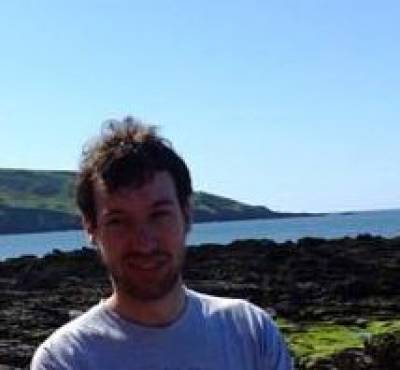
- Marc Williams
Methods and practice of detecting selection in human cancers
Cancer progression is inherently an evolutionary process. Cancer is initiated when a cell acquires somatic mutations that confer a fitness advantage within the tissue ecosystem, and tumours then progress via the clonal expansion of this first cancer cell. Clones within the tumour population undergo mutation, selection and compete for resources, a process which inevitably results in a genetically diverse tumour. It is this genetic diversity within cancer that makes it a difficult disease to treat. From an evolutionary perspective, cancer treatments are in effect a source of artificial selection that select for variants within the population that are resistant to the therapy given to the patient. Such treatments leave behind the resistant cancer cells, leading to later relapse of a treatment-resistant cancer.
A better understanding of the intra-tumour clonal dynamics of cancer progression would therefore enable us to better comprehend the shortcomings of present treatment strategies and to develop newer more effective ones, where we might harness the evolutionary dynamics of cancer clones to our advantage. One important facet in the dynamics that is yet to be fully understood is the role that clonal selection plays.
The traditional view of selection within the clonal dynamics in cancer is that subclones with mutations that confer a high fitness compared to the rest of the population clonally expand and come to dominate the tumour. Successive clonal expansions of selectively advantageous mutants results in an increasingly fitter tumour population. More recently an alternative hypothesis has been put forward that suggests that selection plays little role in tumour progression, and that the time that mutants arise within the tumour lifetime is more important than any fitness advantages it may have. Mutants arising early in the tumour lifetime will according this alternative hypothesis be more dominant in a tumour than those arriving later on.
The project will thus focus on elucidating the role selection plays within cancer, and ultimately attempt to answer how important it is in tumour progression. Due to the nature of the disease, time series data is difficult to obtain, but multi-region data sampling of individual cancers is available. However, in practice, to infer evolutionary dynamics from these data requires making inferences from a relatively sparse sampling of a spatially-structured and highly heterogeneous population of tumour cells. Mathematical and computational modelling is required to relate underling clonal dynamics with the patterns of genetic alterations observed in the genomic analysis of cancers. The student will use both mathematical modelling together with bioinformatics analysis of next generation sequencing data from cancer to investigate these two alternate hypotheses and the role of selection in cancer more generally. The student will also be encouraged to spend time in the wet-lab, collecting the appropriate data on within-tumour diversity that can be used to test the hypothesis generated by their model.
Computational modelling will involve simulating tumour growth using standard non-spatial population genetics approaches such as infinite-allele Wright-Fisher type constructions and birth death processes, and then developing spatial models that are more appropriate to the laboratory data. Analytical approaches that may be investigated as appropriate include branching processes, Markovian stochastic processes and stochastic differential equations.
2012
- Sami Bouremoum
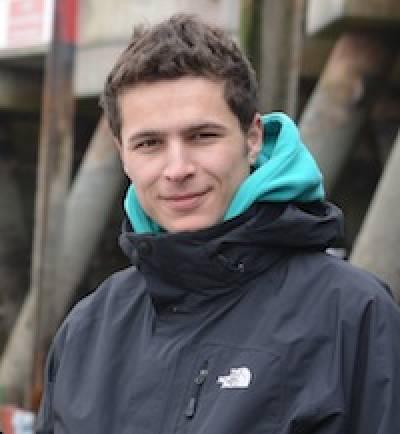
Pattern regularity and scale in biology
The near-synonyms - regularity, order, symmetry and pattern - are important aspects of image structure. Tools for their analysis are relatively undeveloped, the focus having generally been on limited conceptions of symmetry (e.g. global reflectional only) and patterns which are near perfect symmetry. We will working on definitions of local quasi-symmetry in natural images and how to quantify them.
We will also investigate the problem of scale inimage symmetries and hope to obtain a unique scale or a systematic way of obtaining it for any natural image. We will also produce computer software that autonomously computes local symmetry in natural images. By imaging developing embryos as they reach the end of development it is possible to see order emerging within tissues. This pattern refinement occurs at different temporal and spatial scales for different processes in the same tissue. To shed light on this process of refinement, the aim of this project is to develop algorithms that can automatically identify ordering events at different temporal and spatial scales in the developing fly.
- Rory Bufacchi
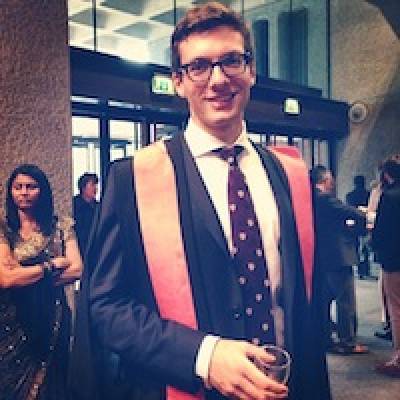
Investigating the specificity of the cortical responses elicited by stimuli of different modalities in humans
Whether primary sensory cortices are essentially multisensory or whether they respond to only one sense is an emerging debate in neuroscience.
The group I am working with recently used multivariate pattern analysis (MVPA, or machine learning) of functional magnetic resonance imaging data in humans to
demonstrate that simple and isolated stimuli of one sense elicit distinguishable spatial patterns of neuronal responses, not only in their corresponding primary sensory cortex, but in other primary sensory cortices (Liang et al Nature Comms 2013). These results indicate that primary sensory cortices, traditionally regarded as unisensory, contain unique signatures of other senses, which prompts a reconsideration of how sensory information is coded in the human brain.
The planned research aims at further characterising the specificity of the response from different cortical areas to stimuli of different sensory modalities, and also exploring the amount of stimulus features that are encoded in the response elicited by stimuli of one given sensory modality in non-pertinent primary sensory cortices. The research will involve the collection of electrophysiological (EEG/MEG) and metabolic (fMRI) functional neuroimaging data, and their analysis using techniques like machine learning.
- Ruth Eccleston
Dynamics of epitope presentation on MHC Class I molecules following viral infection
Major Histocompatibility Complex (MHC) molecules make up part of the cell-mediated adaptive immune system in which antigen-specific defence mechanisms are acquired against threats such as viruses and tumours. MHC-I alleles present short sequences of proteins, known as peptides, which are cleaved in the cytoplasm primarily by the proteasome. Some cell surface peptide-MHC complexes are able to activate cytotoxic T lymphocytes (CTLs) through interactions with T cell receptors (TCR). The probability of CTL activation is determined by the peptide cell surface abundance and the binding affinity between the presented peptide and the TCR. Those peptides which activate T lymphocytes are known as epitopes. In this project we will be focussing on the role of the timing of the presentation of viral epitopes on the cell surface in determining the immune response. This project aims to combine a kinetic model of the pathway of viral peptide presentation from supply to the Endoplasmic Reticulum (ER) to the peptide-MHC complex cell surface abundance, with the production of defective ribosomal proteins (DRiPs) which are implicated in many viral infections. The kinetics of DRiP production will be guided by experimental data and the epitope dynamics of multiple viruses will be compared. It is hoped that such a model will aid the understanding of epitope production and presentation and the role of timing in determining the immunodominance of certain few viral epitopes despite the large variability in peptides ligands at the surface. Understanding what leads some epitopes to become immunodominant may inform the design of peptide vaccines against viruses and other novel therapies.
- Elizabeth Gallagher
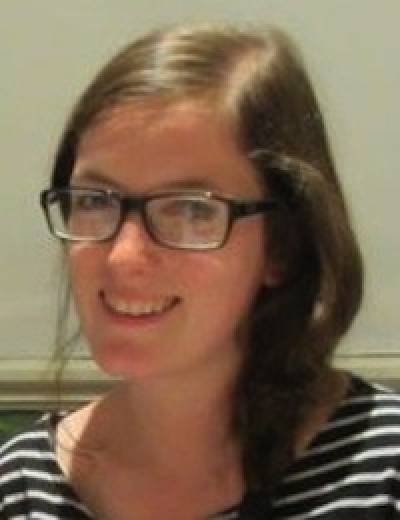
Evolutionary game theory models for the origins of agriculture and the rise of social inequality
The origin of agriculture in southwest Asia at the end of the last Ice Age and its subsequent spread as the main form of human subsistence was one of the most important transformations in human evolution and continues to have major consequences today for many aspects of human health and ways of life (e.g. Bocquet-Appel 2011, Laland et al. 2010). Recent work has challenged behavioural ecology explanations that have seen it as the endpoint of a long-term expansion of
human diet breadth to incorporate lower-ranked resources with increased processing costs (Bowles 2011). Instead Bowles and Choi (n.d.) have developed an evolutionary game theory model of the returns from hunting and gathering versus farming in the context of different systems of property rights by comparing the payoffs of three different strategies - Sharer, Civic and Bourgeois - in relation to the different subsistence systems and the returns expected from them in different climatic conditions. However, there are weaknesses in the Bowles-Choi model. The aim of this project is to develop alternative evolutionary game theory models for the origins of agriculture and go on to model the payoffs to different property inheritance systems and their effects on inequality (cf. Borgerhoff Mulder et al 2009).
- Nicola Lockwood
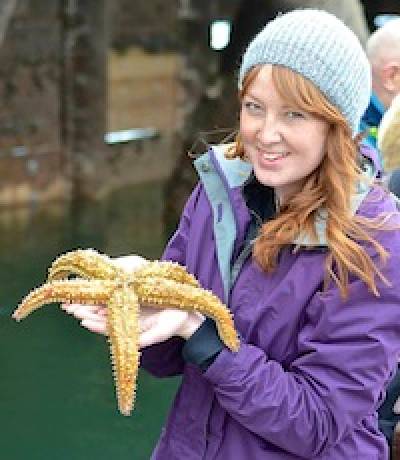
Global imaging of physiological and pathophysiological angiogenesis in live zebrafish using optical projection tomography
Cancer research is in its prime, whereby in vivo studies are incredibly important due to global processes often being involved in key cancer hallmarks, which is particularly true for angiogenic diseases. The majority of previous in vivo studies of cancer have required the model organism to be sacrificed to determine the tumour pathology and molecular alterations.
Therefore, genetic variation between the organisms at each time point was problematic, and so multiple sacrifices were required. The interdisciplinary approach of Optical Projection Tomography can avoid this through observing the progression of individual tumours within live zebrafish over time, therefore providing immense accuracy.
Vascular development and inflammation are critical for progression of the disease state and so act as important targets for drug discovery. Developing this system towards a new stage that can characterise these events at a molecular and signalling level is likely to dramatically improve the way in which global cancer development and cancer cell signalling can accurately be determined. I aim to do this through developing appropriate 3-D imaging techniques including optical projection tomography and establishing methodologies, including generation of novel transgenic zebrafish lines, for the study of angiogenesis.
- Adedeji Majekodunmi
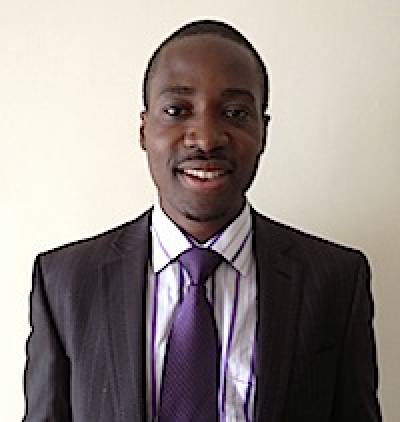
CD4 T cell immune reconstitution in HIV infected children in response to antiretroviral therapy
The number of T and B-lymphocytes in an individual increases in a predictable manner during childhood and then stays remarkably constant throughout adult life in spite of declining production, peripheral cell division and unpredictable responses to infection. The complex homeostatic mechanisms involved are beginning to be understood through combined experimental data, clinical trials and mathematical/statistical modelling approaches.
In HIV infection, CD4+ T cells are lost causing profound immunodeficiency, susceptibility to infection and death. In response to treatment with antiretroviral drugs, normal homeostatic mechanisms in the body strive to replace the lost CD4 T cells by production of new T cells in the thymus and 'homeostatic' T cell proliferation in the periphery (lymphoid tissues) but often do not reconstitute to normal levels.
The aim of this project is to develop mathematical models capable of predicting the levels of CD4 counts in children infected with HIV. Non-linear mixed effect models will be used to compensate for individual variability of CD4 counts seen amongst patients infected with HIV.
The following questions will be answered:
1. How good are the models generated at predicting CD4 counts when children become adults?
2. What is the impact of treatment interruption on long-term CD4 cell reconstitution?
- Federico Mancinelli
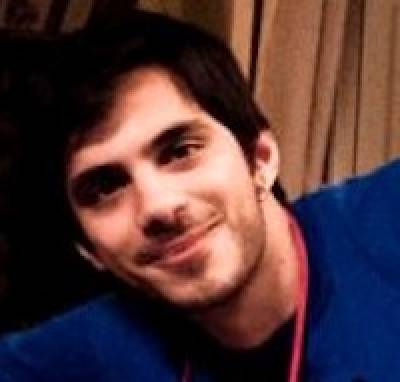
Investigating cognitive control in mental illnesses
The nascent field of computational psychiatry stems from an effort to understand mental illnesses in a new way, through large scale mathematical and computational modelling. Modellisation can bear different levels of abstraction, from the algorithmic level borrowed by the Machine Learning framework, to the neural models belonging to computational neuroscience and Reinforcement Learning.
Here, we harness the Reinforcement Learning framework in order to explore cognitive control in mental illnesses. We focus on the way that an illness can alter the way we make decisions, which can be both endogenous (i.e. decisions on the way we use our working memory) or exogenous, decisions on actions. If the mechanisms and metrics which govern these choices are corrupted, the decisions taken will not be normative. This is important in a range of conditions which affect impaired inhibition and impulsivity and also the deployment of attention. Schizophrenia will most likely be our target.
- Jeremy Owen
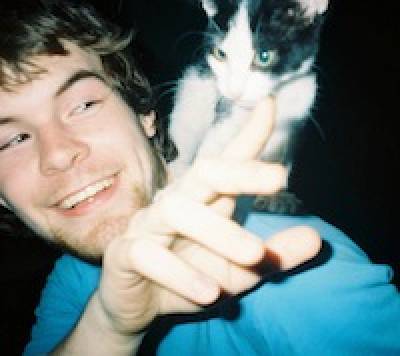
Evolution of reciprocal sex from lateral gene transfer in early eukaryotic evolution
Evolutionary adaptation to new or changing environments cannot happen without genetic variation, which is the source of new, fitter phenotypes in populations of reproducing organisms. The division of higher organisms into two sexes is a strategy to ensure genetic diversity; mixing the genes of two
individuals during sexual reproduction produces offspring with more varied genotypes, increasing the chances of novel adaptive phenotypes. Prokaryotes reproduce asexually, but maintain genetic diversity by processes known collectively as lateral gene transfer, involving the direct movement of genetic material between unrelated organisms rather than the recombination of the parents' genetic information in the offspring.
Eukaryotes, including all sexually recombining organisms, evolved from symbiotic partnerships between prokaryotes, so recombination presumably first originated in organisms that initially used lateral gene transfer to ensure genetic variation. Using mathematical and computational models, I will investigate how events in the early evolution of eukaryotes might have favoured recombination over lateral gene transfer, and why modern-day prokaryotes and eukaryotes use such different mechanisms to ensure genetic variation.
- Jaspal Puri
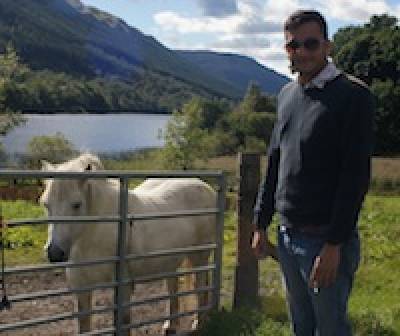
Magneto-Mechanical Actuation of Muscle
Force produced by permanent magnets in close proximity to the body offers an array of potential biomedical applications. One aspect involves the combined use of permanent magnets to control the orientation, migration and growth of cells grown with magnetic materials via a process termed magneto-mechanical actuation.
My PhD project builds on preliminary data that has shown it is possible to measure magneto-mechanical actuation using a combination of cell culture, in vitro and in silico modelling, and image analysis techniques. It is anticipated we will elucidate the parameters needed to successfully achieve magneto-mechanical actuation for a variety of muscle groups found throughout the body whilst also investigating the mechanical properties of explanted muscles by means of uniaxial mechanical testing. The data we generate will be used for in in vitro and in silico modelling of force distributions across cell populations cultured with magnet materials and exposed to different combinations of permanent magnets.
Such work may well significantly impact the field of tissue engineering as well as potentially forming the foundations of novel muscular regeneration therapies.
- Arunas Radzvilavicius
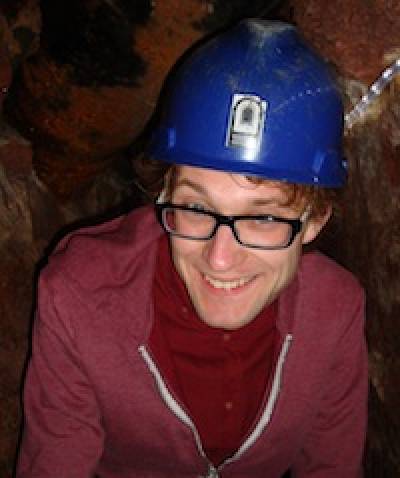
Mitochondrial inheritance in the evolution of complex multicellular organisms with germline-soma differentiation
The emergence of multicellularity in eukaryotes transformed the mapping between mitochondrial fitness in germ line and adult viability by introducing the effects of mutation accumulation, segregation of organelles, division of labour and differentiation. These changes have strong effects on the favoured pattern of mitochondrial inheritance and introduce several costs and benefits of having an isolated germ line.
We propose, that mitochondrial fitness and mutation might be central processes in the development of complex multicellular features, including early germ line definition. The hypothesis can be tested by investigating mitochondrial evolution trends in basal metazoans, higher animals and plants. Results of our computational modelling will possibly lead to the theory accounting for the role of extra-nuclear genomes in evolutionary transitions following the emergence of complex cell and multicellularity, explaining the existence of two sexes, germ line/soma distinction and patterns of cellular ageing.
- Mark Ransley
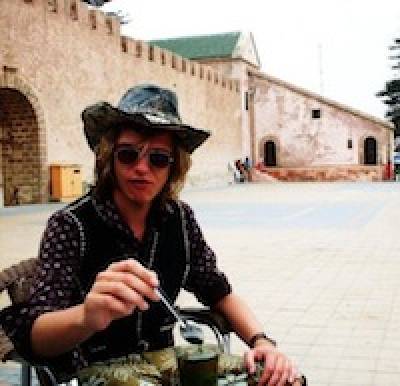
Developing Wearable Assistive Materials (WAM) for Orthopaedic Applications
My research concerns the development of a novel robotic exoskeleton technology, with the ultimate aim of providing an alternative to wheelchairs, walking sticks and other mobility aids. Using chemical actuators and magnetic gels currently in development by the WAM team, we intend to create a material that is thin and light enough to be worn comfortably, whilst its flexibility and shape can be rapidly adjusted with small ionic potentials.
I am investigating the various ways in which the aforementioned drivers could be incorporated into a wearable material, the nature of the control this would deliver, and its applicability to human physiology. Once a suitable control system has been designed, I will be prototyping a proof-of-concept device at the Institute of Making. Working closely with patients at the Institute of Orthopaedics and Musculoskeletal Science, the intention is to be able to produce patient specific Wearable Assistive Materials using an advanced bespoke 3D printer.
- Lourdes Sri Raja
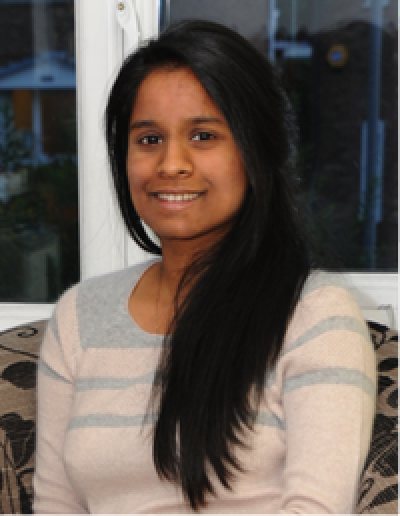
Elucidating the structure of the combined regulatory and signalling network controlling haematopoietic stem cell differentiation
Haematopoietic stem cells are perhaps the most studied of all stem cell types. Despite this, the underlying gene regulatory networks that control proliferation and differentiation, and the signalling systems that process the intracellular and environmental cues, remain to be elucidated. Understanding how to manipulate these processes has wide implications for therapeutics and also serves as a model for the control of other multi-potent stem cell types.
This project has two distinct parts. The first phase will involve the building, and refinement of, a mathematical (computational) model of aspects of the regulation of blood stem cell differentiation. The second phase requires experimentation to validate the new models.
- Matthew Topping
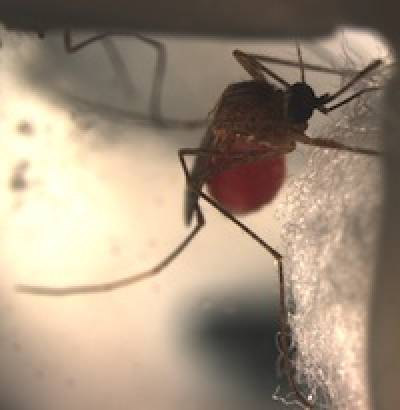
Mechanosensory pathways as potential targets for the control of insect-borne diseases
Insect-borne infectious diseases are one of the major plagues of humanity, annually causing millions of deaths. It always starts the same way: a female mosquito bites a human, infecting them with a disease-causing pathogen. Controlling mosquito populations and preventing them from biting humans is therefore a primary goal in global disease management.
Disease transmission is inextricably linked to the biology of mosquitoes. My PhD project will study the mechanosensory bases of mosquito blood-feeding behaviour. It seems very likely that, in order to insert their proboscis into the human skin, mosquitoes rely on sensory feedback from mechanosensory organs, like e.g. chordotonal organs (ChOs). We will test this by ablating chordotonal organ function using chordotonal-specific insecticides.
Mechanosensory, and specifically chordotonal, signalling, however, is also a crucial component of the animals' air-borne courtship, and copulatory, behaviour. The same strategy that impairs the animals' ability to insert their probosces into human skin could thus also directly impact the animals' reproduction rate.
Results and implications of these experiments will be analysed with newly devised computational models of disease transmission, using the degree of mechanosensory impairment as a novel model parameter.
We anticipate that our approach will lead the way to new strategies of vector control.
- Lucy van Dorp

Investigating Processes Driving Genetic Diversity Among Human Populations
Although it is well established that DNA varies substantially among different world-wide human groups, the principal forces driving this genetic diversity are not well understood. This project aims to describe genetic patterns among a wide range of human groups and characterize the primary historical, anthropological and sociological factors that contribute to observed levels of genetic diversity among these groups.
A novel statistical methodology will be developed and applied to available data stored at UCL, which includes genome-wide DNA interrogated at hundreds of thousands of single-nucleotide-polymorphisms (SNPs) in hundreds of world-wide human subjects. These data resources also include detailed sociological and genetic information from the world's largest DNA collection of individuals from Ethiopia, an important country for studying the origins of anatomically modern humans and their subsequent dispersal from Africa throughout the rest of the world. Through merging these unique methods and diverse datasets, this project aims to answer a number of important questions about human evolution.
 Close
Close

